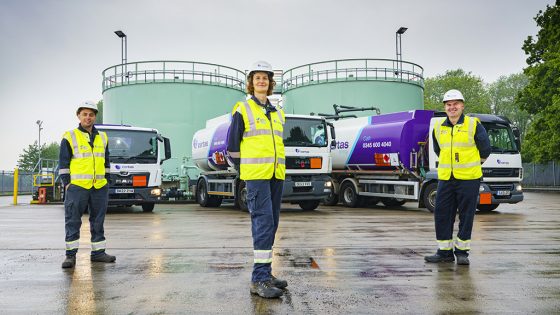Building towards net zero: Fuelling the future of construction

As the UK moves towards its ambitious net-zero goals, the construction industry is under increasing pressure to rethink its energy sources. One promising solution is Hydrotreated Vegetable Oil (HVO), an alternative fuel that can help the sector significantly reduce its carbon footprint. Certas Energy, the UK’s largest independent fuel distributor, is leading the charge by offering HVO as a direct, drop-in replacement for diesel – requiring no modifications to existing vehicles or equipment.
But how exactly can this alternative fuel drive the construction sector closer to net zero?
The case for HVO: Supporting the transition to lower emissions
The construction industry plays a significant role in the UK’s carbon emissions, with the built environment accounting for 25 per cent of the country’s overall footprint. With government regulations tightening around construction-related emissions, industry players are under pressure to decarbonise – aiming for a 78 per cent reduction by 2035 and net zero by 2050. Right now, diesel dominates the sector, powering around 300,000 pieces of machinery and consuming five million tonnes of fuel each year.
This reliance on diesel presents a major challenge for sustainability. So, what can be done to reduce the industry’s dependence on it? According to the Construction Leadership Council, adopting alternative fuels like HVO offers a practical and immediate solution.
Why HVO is the best alternative
Niki Holt, Head of Commercial at Certas Energy, explains: “In today’s market, the best solution that is readily available is HVO, which can be dropped straight into any engine currently running on diesel.”
HVO offers several advantages over traditional diesel. For one, it has a higher cetane number, resulting in more efficient combustion, producing fewer residues and lower particulate emissions. This not only reduces pollution but also extends the life of diesel particulate filters, cutting maintenance costs.
Furthermore, Certas Energy supplies AdBlue – a diesel exhaust fluid that works alongside Selective Catalytic Reduction (SCR) technology to convert harmful nitrogen oxides into harmless nitrogen and water vapor, reducing emissions by up to 90 per cent. Combined, HVO and AdBlue offer a powerful way to reduce emissions without compromising on performance.
Idle time: The silent culprit
A lesser-known contributor to emissions in the construction industry is idle time. Volvo CE estimates that construction machines stand idle for 40-60 per cent of their operating time. By implementing engine idling policies and auto-shutdown features, companies can not only reduce emissions but also lower fuel costs – without sacrificing productivity.
The electric conundrum
Electric vehicles (EVs) and machinery present another avenue for reducing emissions, but the construction sector faces unique challenges when it comes to electrification. A lack of widespread charging infrastructure and the high cost of battery technology are significant barriers. Additionally, concerns around the sustainability of lithium-ion batteries – due to issues like deforestation and unethical mining practices – remain unresolved.
For high-energy-demand machines like excavators, battery power may not be feasible for extended use without diesel generators to back them up, which negates the benefits of electric power. In these cases, HVO can fuel the generators, providing a more sustainable solution.
Paving the way to net zero
The UK construction industry stands at a pivotal moment. The shift towards alternative fuels like HVO is not just a regulatory necessity but a business opportunity to reduce environmental impact, lower operational costs, and position companies for a sustainable future.
HVO and AdBlue represent readily available, drop-in solutions that can drive the industry closer to its emissions goals – without major infrastructure changes. By embracing these technologies now, construction businesses can help build a cleaner, healthier and more sustainable future for the UK.
 Visit our website for more information
Visit our website for more information



